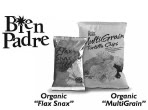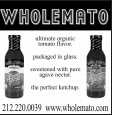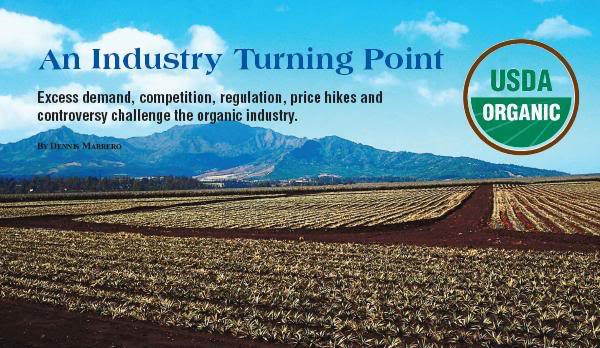With average gas prices exceeding $4 a gallon and the cost of soy, grain and other commodities skyrocketing, organic, high-priced food is bound to be affected in the economic downturn. Right? Contrary to this logic, the market for organics is still strong and its consumer base is expanding beyond previous barriers of age, ethnicity and income (see sidebar below).
In fact, a report recently released by The Nielsen Company, based in New York, NY, found that total sales in U.S. food, drug and mass merchandiser stores (excluding Wal-Mart) of UPC-coded organic food and non-alcoholic beverages were up 25% to $4.38 billion in the 52 weeks ending April 19, 2008. Conventional foods, on the other hand were only up 4.4%, much of which is attributed to inflation rather than demand (1).
This isn’t the first year organics has had such sharp growth. Sales growth of UPC-coded products grew by 19.5% in 2005, 26.9% in 2006 and 27.9% in 2007 (1). Pt. Roberts, WA-based Investor Ideas reported similar trends in organic sales that state the Canadian organic industry is growing by an average annual rate of 20% and the U.S. organic industry has grown by almost 80% from 1997 to 2006 (2).
Barbara Haumann, spokeswoman for the Organic Trade Association (OTA), based in Greenfield, MA, believes numbers like these show promise for the industry, and even though all industries will feel the effects of the current economic downturn, organic is here to stay. “Consumers who truly believe in organic agriculture and products are continuing to buy organic products and cutting down on some other expenses, such as eating out,” she explains. Moreover, “Consumers who have occasionally bought organic products are also continuing to do so as a treat or to reward themselves. Those who may be cutting down on dining out are, in fact, buying organic products at supermarkets and farmers’ markets, and taking these ingredients home to cook an appealing meal,” she adds.As with any expanding industry, there will be growing pains and unforeseen losses as in the Midwest recently. Mark Lipson, senior policy analyst at the Santa Cruz, CA-based Organic Farming Research Foundation (OFRF), adds, “There will be more demand, new production, significant price volatility, shakeouts, scandals, validation, debate, etc. etc. There will be strain on the organic community at all levels, but,” he says, “most of the community will show strong resiliency.”
That being said, the industry that introduced organics to the mainstream will certainly benefit from maintaining or increasing that support. Natural products retailers should be in the know about the organic industry and educate their clientele on important decisions being made. Most importantly, support manufacturers and farmers that have nothing to hide and meet U.S. Department of Agriculture (USDA) regulation. Following are some of the many key issues surrounding the organic market today. Rapid growth, however, brings about rapid change and retailers should keep current on organic news.
 The 2008 Farm Bill
The 2008 Farm Bill
Perhaps the most important matter on the table is the recent passage of the 2008 U.S. Farm Bill. Despite minor criticism, the provisions set forth in the document are being seen as a major victory for the industry. “It is the most progressive Farm Bill to date in terms of its support for organic agriculture,” said Sonja Tuitele, spokesperson for Boulder, CO-based Aurora Organic Dairy. “We are pleased that the provisions cover funding for organic research, for organic economic market data collection, organic conversion assistance for farmers and an overall boost in funding for the USDA’s National Organic Program (NOP),” she adds.
Organic research funding, in particular, received $78 million in funding, which is almost a 600% increase from the previous Farm Bill. The OTA’s Holly Givens explains that the organization focused on four priorities during the Farm Bill’s decision-making process and saw success in each:
- Fostering transition to organic agriculture and trade.
- Eliminating hurdles to organic agriculture and trade.
- Initiating and finding organic agriculture economic research.
- Maintaining and enhancing current agency programs.
Nevertheless, OFRF’s Lipson warns that while “organic farmers, manufacturers and consumers have won some legislative victories… these have to be used, defended and consolidated in the implementation actions by USDA.” He does note, however, that the increased funding for organic programs and initiatives can add up to significant changes in our food systems.
“Consistent double-digit sales growth in the organic segment has already changed the food industry,” says Jason Kessler, president of New York, NY-based Wholemato. “The challenge now for organic farmers and manufacturers is to utilize the increased support to maximize market share and understanding. Organics make sense for so many reasons, now we have to use this spring board [the Farm Bill] to deepen that understanding.”
 Jack J. Singh, N.D., H.M.D., founder of Organic Food Bar, located in Fullerton, CA, also believes the provisions to be very promising, but says there are two drawbacks: “One, organic farmers still must pay a 5% premium for crop insurance (discouraging organic farming). And two, though organic research funding increased dramatically, it still lags behind when compared with organic market share as a total of all food crops.” More specifically, while the USDA’s research funding for organic made up nearly 1% of its budget, the organic market makes up nearly 4% of the U.S. retail market. Estimates presented by Don Burgett, development coordinator at OFRF, at this year’s Natural Products Expo West in Anaheim, CA, suggest that the organic market could make up to 10% of the U.S. retail market by the end of the five-year Farm Bill (3).
Jack J. Singh, N.D., H.M.D., founder of Organic Food Bar, located in Fullerton, CA, also believes the provisions to be very promising, but says there are two drawbacks: “One, organic farmers still must pay a 5% premium for crop insurance (discouraging organic farming). And two, though organic research funding increased dramatically, it still lags behind when compared with organic market share as a total of all food crops.” More specifically, while the USDA’s research funding for organic made up nearly 1% of its budget, the organic market makes up nearly 4% of the U.S. retail market. Estimates presented by Don Burgett, development coordinator at OFRF, at this year’s Natural Products Expo West in Anaheim, CA, suggest that the organic market could make up to 10% of the U.S. retail market by the end of the five-year Farm Bill (3).
Even still, organics are in much better shape than they were the previous year. Frank McCarthy, vice president of marketing at Albert’s Organics, which has organic distribution centers throughout the nation, says, “Frankly, I think the politics being the ‘art of possible,’ and knowing that subsidies bring regulation that independent growers don’t want or need, the organic community led by OTA got everything it could.” He notes that some growers might want outright organic crop subsidies or a cessation of support for conventional “program crops,” but, he says, “I believe that what most organic growers want is a level playing field and help with industry-wide issues.”
In regard to organic imports, the Farm Bill will hopefully produce greater confidence in foreign organics that was not previously had. “In addition to overseeing all enforcement of organic standards in the United States, the NOP handles requests concerning materials, and must keep up with the growing industry in its emerging sectors,” says Givens. “Because all food and beverage products sold as organics in the United States must meet or exceed U.S. organic regulations, and many products come from outside the United States, the NOP must also work internationally to accredit certification organizations around the world.” By 2011, she says, funding for the program could triple and by 2012, authorized funding will be $11 million. This comes at a time when consumer trust in imported products is at an all-time low, and with increasing demand, regulation of foreign organics is essential.
The “New Organic” Competition
Who Is Buying Organic?By Carly Eastern Think you know who’s buying organic? Contrary to popular belief, consumers buying organic products cannot be categorized by age, income or various other demographics. What may tie together organic shoppers, however, is their common concern for the environment. In December 2007, Mambo Sprouts Marketing surveyed shoppers to forecast organic foods purchases in 2008. Not only did consumers want to buy the best products for their health, but they also sought to purchase items with the least environmental impact. More than seven in 10 consumers said it was important (41%) or very important (32%) to do business with companies that were environmentally responsible. Notably, they’re willing to spend money on organic products even though times are tough on the wallet. In an April 2008 consumer survey, Mambo Sprouts Marketing noted about nine in 10 (88%) shoppers still buy the same (52%) or more (36%) green products versus six months ago. Despite the lagging economy, seven in 10 were willing to spend up to 20% more for green products and only one in six (17%) started buying fewer. Other research confirms that your most well-off shoppers are not your only organic buyers; even those strapped for cash will invest in organic products. A Mindset Media profile of organic consumers (generated from a study using Nielsen’s Online panel) indicates, “buying organics is a state of mind, not a state of wallet.” Mintel also found that Hispanics, a group typically categorized as working class, make up a strong portion of natural and organic consumers. According to the Mintel Global New Products Database, 74% of Hispanic’s total personal care product purchases were classified as natural or organic. A Vertis Customer Focus Opinions 2007 survey agreed with the firm, finding 53.5% of Hispanics saying all-natural ingredients are the most influential information on the product label. Thirty-two percent said organic ingredients influenced them the most to purchase a product. The needs of Hispanic shoppers may be an untapped market, though, as few manufacturers have launched products designed specifically for this large population. There are 45.5 million Hispanics in the United States, according to the U.S. Census Bureau, and this group has needs that are in line with the offerings of the natural products market. According to www.kidshealth.org, almost 80% of Hispanic American children are lactose intolerant, but bilingual soy food marketing is miniscule. Hispanic American families also have one of the highest obesity rates in America because other markets, such as fast food, reach 93% of homes according to www.medicinenet.com. The increase of natural food marketing would greatly increase sales in the Hispanic market. Bilingual packaging and promotional materials may be simple strategies to increase sales. |
ometimes coined the “slow-food” or “locavore movement” or even the “new organic,” consumer devotion to local foods is growing at an increasing rate. What does this mean for your store and the organic industry? Don Stinchcomb, president of Purity Foods says, “I can fondly remember when a tomato actually had a taste and was soft to touch. Local agriculture using organic practices, with no genetic engineering, could bring experiences of eating heirloom grains and freshly ripened local produce back to the discriminating buyer.”
As for competing with the organic market, however, Stinchcomb says that local foods will not impact the organic market as much as the devalued U.S. dollar. Organic imports will suffer in two ways, he says, “One being that similar products produced in America will cost less due to the exchange rate, but also (two) the cost of freight to ship a container to the United States will be much higher since the cost of oil has skyrocketed and has caused the cost of container rates to climb precipitously.”
Lipson agrees that the local food competition “is mostly in the eyes of the media and pollsters, it is not a fact in the marketplace. Organic,” he adds, “is the baseline for any robust local food systems development. Increased local food systems inevitably mean more attention to and demand for organic systems.”
Tuitele of Aurora Organic Dairy says that while local foods are becoming more popular, “We live in a culture now where people have become accustomed to having access to asparagus in January and peaches in March. By having small, local organic farmers, larger domestic producers and international players participating in the U.S. organic community, we can provide choices to consumers based on their needs.” If organic producers work together, she adds, and “continue to drive demand for organic products, all producers will benefit, regardless of size or reach.”
The issue with local foods is also not as simple as it seems. “For instance,” says Haumann of the OTA, “in Great Britain, there has been a movement by The Soil Association to ban ‘air-freighted’ organic foods due to arguments around ‘food miles’ for transport.” However, she explains, a 2007 study conducted in New Zealand found that dairy products produced in the United Kingdom used twice as much energy per metric ton of milk solids as those produced in New Zealand, including transportation.
Singh of Organic Food Bar puts it simply: “Of course, organic is always better. It’s the way nature intended food to be. With improved transportation methods, the carbon footprint is much more than buying local.” However, he says, “We certainly always want to support local, but only if we are not encouraging conventionally chemically-infested and/or genetically-modified produce.”
Wholemato’s Kessler agrees. “Local organics are best, followed by non-local organics, then by local conventional and finally non-local conventional. Given the studies I’ve seen on organic tomatoes,” he adds, “I’m convinced organic tomatoes are better for us physically and I can easily extrapolate that to all organic foods.”
Organic certification also verifies that environmentally friendly practices are used and that these practices are “beneficial for the local communities in which they are used, wherever that may be,” says Haumann. “In addition,” she notes, “it is more efficient—and better for the planet overall—to grow certain organic products in specific locales, which may not always be in one’s backyard.”
Stinchcomb also notes that local is limited in definition. “If 150 miles from the producer is considered local, then what of the distributor who is 80 miles away but delivers to an array of customers up to 400 miles away. When does it stop being local? How is it tracked? Will it need an audit trail?” he questions.
Nevertheless, Shannon Szymkowiak, marketing and member service manager at the Whole Foods Co-op, says retailers that support local farms will benefit. Creating a “locally grown” and “locally owned” section in your store will appeal to supporters of the local movement, but she says, “If you have no one growing it, you can’t sell it.” Forming relationships with local farmers by promising them certain amounts of orders will encourage their production and increase your sales. In regard to Stinchcomb’s definition questions, retailers should create their own guidelines as to what they consider local and share that with their clientele, says Szymkowiak. Promotion programs such as hosted local dinners, she says, can further expand programs like these (3).
Additionally, says Robert Gelser, general manager at Once Again Nut Butter, “With more money being made available in the Farm Bill for crop conversion, we will soon start to see these two issues converge to become locally organic.” Retailers should begin to look into newly emerging organic farms in their area and ask local conventional farms if they will be going organic due to high consumer demand, as well as the increased funding.
Moving Forward
As stated previously, with increased attention to the organic industry come increased skepticism, mass market competition and a fear of lowered standards. Says Gelser, “My concern is the ‘quality of integrity’ of raw material supply being supplied to consumers as demand exceeds supply.” He asks, “Will all organic producers have the same criteria?”
OTA’s Haumann says that the NOP continues to hone in on existing organic standards such as pasture requirements and origin of livestock and is continuing to take steps to cover other issues like pet food and aquaculture. “Although these steps take time,” she says, “they do indicate that organic standards continue to evolve to a broader scope.”
 New concerns such as clones in our food supply are worrying consumers as well. Although the NOP states that foodstuffs from clones will not be in organic products, regulating the progeny of clones is much more of a gray area (see March 2008 WholeFoods, p. 8).
New concerns such as clones in our food supply are worrying consumers as well. Although the NOP states that foodstuffs from clones will not be in organic products, regulating the progeny of clones is much more of a gray area (see March 2008 WholeFoods, p. 8).
Aquaculture, as Haumann brought up, also creates a gray area and brings up the daunting question: Where is the line drawn? Andrea Caroe, executive director at Protected Harvest, a non-profit organization promoting sustainable agriculture, explains, “Fish eat fish, but fish aren’t organic. So, how do you feed organic fish? (3)”
Other problems facing the organic industry involve organic farmers’ groups in poor countries, which have been burdened by regulations and fees that prohibit them from keeping their certification. In April 2007, the NOP stripped a Mexican grower group of its organic certification after finding that one farmer in the entire group failed to detect the use of pesticides and fertilizer in crop storage. While actions like these are necessary for organic integrity, small-time farmers that obey organic regulations may be forced give up their certification due to its cost (see June 2007 WholeFoods, p. 16).
How the industry deals with these issues and those that have yet to be faced will decide the future of organics. Tuitele says, “As long as consumers continue to have faith in that [organic] label, and trust in the system of accreditation we worked so hard to achieve, we believe consumer acceptance of organic products will continue to grow.” She also notes that as USDA’s regulation continues to evolve, consumer understanding and trust in organic products will increase.
This trust, however, can only come with a strong defense of organic integrity. Organic Food Bar’s Singh says that many forces seek to soften organic standards so others must go above and beyond to safeguard, and uphold, them. “The notion that any food entity puts profits over people by whittling away at the very standards that protect those people is downright disgraceful,” he says. “We’re talking about people’s health here; health is our most precious asset. Food companies should protect that at all costs!” WF
References
- P. Lempert, “Will Organics Keep Vibrant in a Changing Economy?” Facts, Figures and the Environment e-newsletter, June 8, 2008.
- InvestorIdeas.com, “Reports on Trends in Organic, Natural Foods and Alternative Health Stocks and Industry,” available at http://www.investorideas.com/News/041808a.asp, April 18, 2008.
- D. Burgett, et al., “What’s Sprouting in Organics,” presented at Natural Products Expo West, Anaheim CA, March 14, 2008.
Organic Vs. ConventionalMany have gone back and forth with this argument, and, as of now, conclusive research has not been shown to benefit either side. However, The Organic Center, based on its review of studies that examine plant-based organic foods, says “Yes, organic plant-based foods, are on average, more nutritious (1).” As far as consumer perceptions go, Robert Gelser, general manager of Once Again Nut Butter, highlights the 2006 and 2007 Organic Market Update compiled by The Hartman Group, which found that consumers choose organic foods based on their perceived health benefits. Although the U.S. Department of Agriculture defines organic as a farming method, and thus, cannot carry a health claim, “its easy to see why consumers can draw a connection to a lack of pesticide use and healthier living,” says Gelser. Research from the UK’s Soil Association, as well as The Organic Center, that show better nutrient retention in organics, he says, strengthens this connection even more. Jason Kessler, president of Wholemato, believes that there is an “interconnectedness of the foods we eat and our own health.” Given this relationship, he says, “crops grown without the aid of petroleum-based synthetic pesticides and artificial fertilizers will express their innate, naturally evolved systems and provide a nutritional source that is what we as humans have evolved eating. Since non-organic farming or ‘conventional farming’ supported by pesticides and fertilizers has only really been available for less than 100 years, our bodies haven’t adjusted to these changes.” “In general,” says Mark Lipson of the Organic Farming Research Foundation, “this debate is grossly oversimplified and crippled by the lack of good research for assessing whole-system health and whole food quality.” Nevertheless, as more research is done, accurate nutrition values may fall in favor of organics. Reference |
Published in WholeFoods Magazine, August 2008









